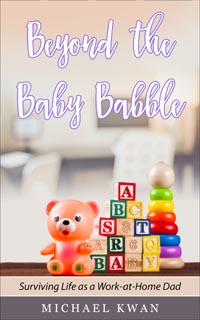
I’ve said this before and I’ll say it again: English is a tricky language. Right when you think you have a handle on all the different rules, you are shown a nearly endless variety of exceptions to those rules. This is particularly common when it comes to conjugating verbs.
“I seen it” is something that I hear all the time and it’s like listening to fingernails on a chalkboard. It is grammatically incorrect and it is possibly even more common than people saying things like “could of” and “should of.” So, why is it wrong?
“Seen” is a verb form known as a past participle, which is meant to indicate that an action is completed. It is important to note that this is quite different from the regular “past tense” form of a word. That’s because a past participle should not be used on its own. It needs a “helper” word, usually in some form of the verb “to have” or “to be.” In the case of “to have,” the combination is then known as the perfect tense.
Present tense: I see the birds.
Past tense: I saw the birds.
Perfect tense: I have seen the birds.
Part of the confusion comes because most people don’t realize that the “past tense” and “perfect tense” are not the same thing, even if they are exactly the same word. Take this pair of sentences as an example.
Past tense: I walked here.
Perfect tense: I have walked to work every day this week.
Conjugating verbs is something that will have to come with practice. Just be sure to note any irregular verbs that you encounter. Using the wrong form for more obscure verbs is more forgivable than incorrectly using their when you really mean there, but that doesn’t mean that you shouldn’t even try. After all, proper grammar matters.
I’d like to offer a tip of the hat to Corbin Tomkinson for suggesting today’s topic. Do you have a grammar question (or pet peeve) that you’d like to see addressed in a future Grammar 101 post? Be sure to let me know through the comment form below!




Is the past tense the same as the imperfect tense?
My biggest pet peeve is when people use apostrophe’s [sic] incorrectly. But you covered that way back in 2008.
One thing I’d be interested to see is the correct usage of “double quotation marks” vs. ‘single quotation marks’. I’m not quite sure what the difference is meant to be.
Here is a partial explanation:
Grammar 101: Using Quotation Marks
Yes, I have heard this one thousands of times over the past few years. In fact, I think that the incorrect usage is increasing at a tremendous rate. I wonder why such is the case? Poor teachers I guess.